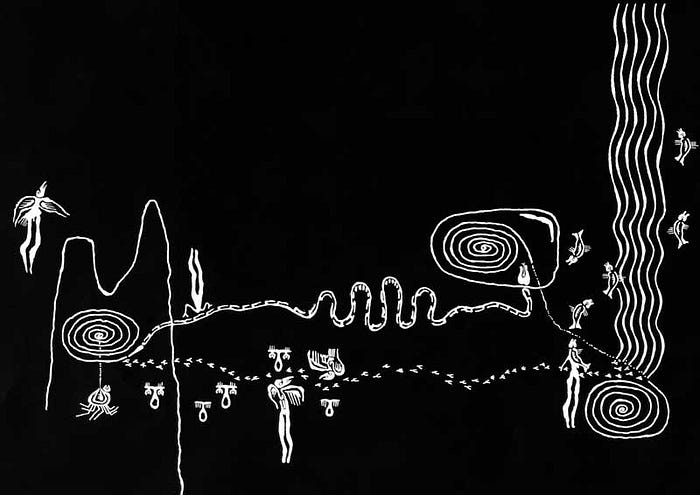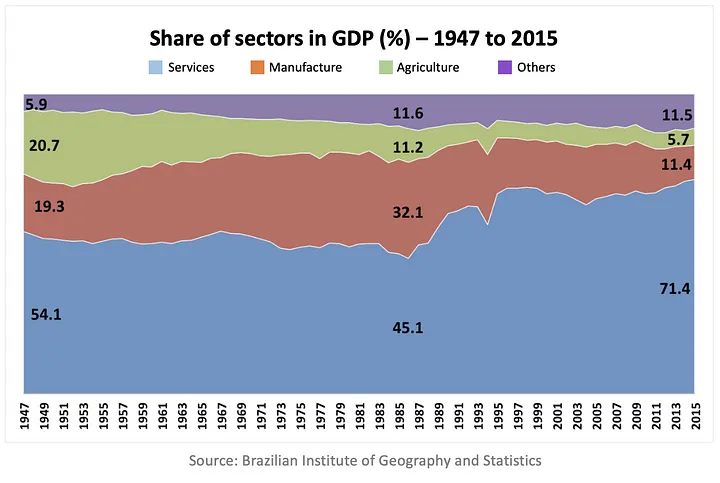Collective action in the formation of the area in the country.

Any attempt to assemble an account about a relative period of space-time will generate tensions between the perspectives of the observing person and the observed person. Terry Eagleton in his book “ Idea de Cultura ” proposes an analysis of the historical process so that historical change can be perceived and, with it, the change in meaning that facts have for the subjects who experience them in each period. What I am proposing here, as a starting point, is to bring a particular vision of someone who lived (and still lives) actively building the practice of User Experience (in English, UX — User Experience ).
My journey in this field started in 1995, coming from Computing. At first, I had little clarity about what was being built between the intersection of technology, design, and humanities disciplines. I desired to develop digital interfaces and so I went to study Design at the Federal University of Paraná somehow I connected studies of digital interfaces in Computing, through the field of Human-Computer Interaction (HCI), or even in some courses in Human-Computer Interaction. Machine. In design, this practice was in Ergonomics and beginners’ User Interface Design and Digital Design. In Visual Communication, there was still the study of Information Architecture and Informational Design.
All this was being mixed in the cauldron inside my head and was being put into practice by professionally developed digital projects on the web. Many books, scientific articles and articles from specialized magazines in these areas entered my library and I systematized these connections under the Interaction Design label.
I often use the metaphor of a big umbrella to name the UX area to have a more systemic view of this field. I agree with Don Norman in this video below when he says that the term is being misunderstood and misused lately. However, it is worth a caveat in the video and a historical correction, as the term was used for the first time by Branda Laurel, in the article “ Interface as Mimesis ” of 1986, at the time director of the games department at Atari.
Bringing a little more of this reflection on the task of gathering the History of UX in Brazil, I also quote Peter Burke in the book “ History and Social Theory ”, which defines the anthropological perspective of the cultural historian, stating that “the more distant a culture is from we can more easily treat their everyday life as an object of study”. Therefore, a great difficulty for me has always been to build this space of estrangement in the field of User Experience, as I have always been very involved as a professional, teacher and researcher — to the point of fostering the first groups of practitioners and beginners, the first events, the first connections with international associations, the first courses in the country and then coming to know, the first actions in Latin America.
Given all this contextualization, I risk making a first version of important points in constructing the History of UX in Brazil. I follow Jacques Le Goff’s concept of history in ” History and Memory “, where he says that “it is the science that studies human beings and their action in time and space, concomitantly with the analysis of processes and events that occurred in the past”. Given that, I bring a first vision based on what I lived, studied, researched and helped build as a participant-observer of this history.
I want to invite other people, who also experienced this period, to send contributions to enrich this document and thus generate new updates of this timeline, which tells a little bit of the history of this very important professional practice for the growth of the digital market and which is concerned, mainly, the humanization of technologies in our country.

As in Design, lengthy discussions take place about when to start practising this profession. The same is true here as different threads connect to form the UX field. Even though there have been initiatives in the field of digital interfaces since the 1960s, I took as a starting point the constitution of SIGCHI ( Special Interest Group on Human-Computer Interaction ) in 1982, belonging to ACM ( Association for Computing Machinery- this one created in 1947), which brings together the leading institutions and researchers in Computing in the world. Another challenge was to carry out an epistemological contour because, in the same clipping of this research, there is the emergence and strengthening of other practices in Design, which feed each other in a beautiful symbiotic dance.
Contributions can be sent to this link or left here in the comments on this Medium. The document follows the Creative Commons License with Attribution (CC BY-NC-SA) — Non-Commercial Use and Share-Alike License. This license prevents commercial use, but allows distribution as long as the same license is used, citing the source and author.
Link to download PDF with better resolution.
Shall we continue this story?
References
BURKE, Peter. History and social theory. São Paulo: Editora UNESP, 2012.
BURKE, Peter. What is cultural history? São Paulo: Editora Zahar, 2021.
EAGLETON, Terry. The idea of culture. São Paulo: Editora UNESP, 2011.
LE GOFF, Jacques. History and memory. São Paulo: Editora UNICAMP, 2013.


